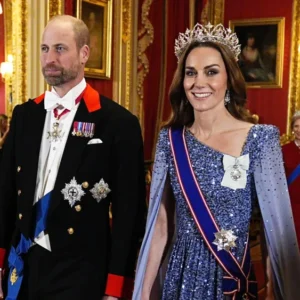In the glittering arena of global wealth, where fortunes rise and fall like digital tides, 2025 has witnessed a seismic shift. Alice Walton, the unassuming heiress to the Walmart empire, has not only claimed the crown as the world’s richest woman but has also stormed into the exclusive $100 billion club with a staggering $106 billion fortune. This milestone, fueled by a relentless surge in Walmart shares, marks a triumphant return for legacy retail—a sector long overshadowed by the flashy disruptors of Silicon Valley. Meanwhile, Elon Musk, the undisputed king of innovation, has catapulted his net worth to an unprecedented $500 billion, solidifying his status as the planet’s wealthiest individual. Yet, as Walton’s ascent widens the chasm between traditional brick-and-mortar giants and tech’s boundary-pushing pioneers, it raises profound questions about the future of wealth creation in an era defined by e-commerce, AI, and electric dreams.
Alice Walton’s journey to billionaire stardom is a tale woven from the fabric of American retail ingenuity. Born on October 7, 1949, in Newport, Arkansas, she is the only daughter of Sam Walton, the visionary who founded Walmart in 1962 as a humble discount store in Rogers, Arkansas. Sam’s philosophy of “everyday low prices” revolutionized shopping, transforming a single outlet into a global behemoth with over 10,000 stores worldwide and annual revenues exceeding $650 billion by 2025. Alice, alongside her brothers Rob and Jim, inherited a slice of this empire upon Sam’s death in 1992. Today, the Walton family collectively controls nearly 50% of Walmart’s outstanding shares through family holding companies like Walton Enterprises, a stake valued at hundreds of billions.
Walton’s path diverged early from the corporate grind. After earning a degree in economics and finance from Trinity University in San Antonio, Texas, in 1971, she briefly dabbled in the family business as a buyer of children’s clothing at Walmart. But her spirit, described by her father as “maverick—even more volatile than I am”—pulled her toward finance and, ultimately, the arts. In the 1970s and 1980s, she worked as a stockbroker in New Orleans and Houston, navigating the oil booms and busts of Texas with a keen eye for opportunity. A tragic car accident in 1989, which claimed the life of her brother-in-law, and another in 1983 that injured a police officer, marked personal lows, but Walton emerged resilient, channeling her energies into passions beyond the boardroom.
By the turn of the millennium, Walton’s focus sharpened on art—a lifelong love sparked by childhood watercolors painted with her mother during family camping trips. Her first acquisition, a Picasso print bought at age 10 with five weeks’ allowance, hinted at the collector she would become. In 2011, she unveiled her magnum opus: the Crystal Bridges Museum of American Art in Bentonville, Arkansas. Nestled amid 120 acres of Ozark trails, the Moshe Safdie-designed marvel cost $1.6 billion to build, largely funded by family trusts. Housing masterpieces from Asher B. Durand to Andy Warhol, it draws over 700,000 visitors annually, democratizing high culture in the heartland. Walton’s personal collection, valued at $500 million, includes luminaries like Norman Rockwell and Georgia O’Keeffe, but she’s no hoarder—through her Art Bridges Foundation, launched in 2016, she’s loaned over 500 works to 230 regional museums, investing $377 million to bridge urban-rural divides in American art access.
Philanthropy forms the bedrock of Walton’s legacy, eclipsing even her retail inheritance. In 2017, she established the Alice L. Walton Foundation, committing to arts, education, health, and economic opportunity. By 2025, she’s funneled over $6.1 billion into family foundations, with $1.7 billion disbursed directly from her coffers. The Crystal Bridges expansion in 2025 added an 85,000-square-foot wing blending galleries with wellness spaces, underscoring her belief in art’s healing power. Partnering with the Ford and Mellon Foundations, she pledged $11 million via the Leadership in Art Museums initiative, creating diverse curatorial roles to combat racial inequities in the sector.
Health equity emerged as Walton’s boldest pivot. In 2019, she founded the Whole Health Institute, emphasizing holistic care integrating mind, body, and spirit. This ethos birthed the Alice L. Walton School of Medicine, a nonprofit MD program in Bentonville that welcomed its first 48 students in July 2025. With tuition waived for the inaugural five cohorts—thanks to a $250 million infusion—it’s reimagining medical training amid America’s doctor shortage. Collaborations with the Cleveland Clinic aim to slash costs and expand specialties like oncology in underserved Northwest Arkansas. “Our goal is transformative education,” Walton declared at the white-coat ceremony, “preparing healers for the 21st century’s challenges.” Her equestrian roots persist too; once a champion horse breeder at her Texas ranch, she now funnels millions into equine therapy programs tied to her wellness empire.
Walton’s $106 billion fortune crystallized in October 2025, propelled by Walmart’s stock soaring 19.24% year-to-date, capping a 70% rally from 2024. At $81 per share, the retailer’s market cap hit $650 billion, buoyed by inflation-weary consumers flocking to its value proposition. E-commerce now claims 20% of sales, with Walmart+ subscriptions rivaling Amazon Prime. Walton’s 11% effective stake—via trusts and holdings—catapulted her past L’Oréal’s Françoise Bettencourt Meyers ($81.6 billion) and into the centibillionaire echelon, ranking her 15th globally. Brothers Jim ($104 billion) and Rob ($102 billion) trail closely, their combined $312 billion underscoring the family’s retail dominance.
Contrast this with Elon Musk, whose 2025 trajectory reads like a sci-fi epic. The South African-born polymath, now 54, shattered records by becoming the first to breach $500 billion in net worth, a figure dwarfing Walton’s by nearly fivefold. Musk’s empire spans Tesla (13% stake worth $139 billion), SpaceX (42% stake at $168 billion valuation), and xAI (53% stake at $60 billion post-merger with X). Tesla’s shares, up 14% in 2025, reflect its pivot to AI-driven autonomy and robotics, with deliveries hitting 497,000 vehicles in Q3 amid U.S. EV tax credits. SpaceX, valued at $400 billion after an August tender, dominates launches with Starship’s Mars ambitions and Starlink’s 4 million subscribers. xAI’s Grok-3 chatbot, unveiled in February, positions it against OpenAI, while Neuralink’s brain implants and The Boring Company’s tunnels add speculative flair.
Musk’s milestones cascade like dominos: $300 billion in 2021, $400 billion by December 2024, and $500 billion in October 2025—fueled by a $1 billion personal Tesla buy and a proposed $1 trillion pay package tying compensation to “Mars-shot” goals like an $8.5 trillion market cap. Yet volatility defines him; his fortune dipped $126 billion in early 2025 amid DOGE distractions and political firestorms, only to rebound on Tesla’s focus. From PayPal’s $175 million windfall in 2002 to Twitter’s $44 billion acquisition (rebranded X in 2023), Musk embodies disruption: electric vehicles challenging Detroit, reusable rockets upending aerospace, AI probing cosmic truths.
This juxtaposition—Walton at $106 billion, Musk at $500 billion—illuminates the yawning wealth gap between legacy retail and tech disruptors. Walmart, born in 1962, exemplifies stability: steady dividends, global scale, and adaptation via Walmart Marketplace and drone deliveries. Its 2025 revenue growth of 4.7% to $169 billion stems from physical stores’ enduring pull—2.2 million employees, hyper-local assortments. Yet, its trajectory pales against tech’s exponential curves. Tesla’s market cap ballooned from $76 billion in 2020 to over $1 trillion in 2025, driven by software margins (60%+) versus Walmart’s razor-thin 2-3%. SpaceX’s private valuation leaped tenfold in five years, unburdened by quarterly scrutiny.
The disparity traces to innovation velocity. Traditional retail grapples with “tech debt”—outdated systems hiking costs amid e-commerce’s 15% annual growth. Walmart invests billions in AI for inventory but lags Amazon’s predictive prowess. Disruptors like Musk thrive on network effects: Tesla’s Full Self-Driving data moat, xAI’s real-time X integration. Retail’s wealth compounds linearly via sales volume; tech’s multiplies via valuations betting on futures—autonomy, colonization, singularity. In 2025, as AI chatbots boost Walmart conversions by 15% and predictive tools refine assortments, the gap narrows slightly. But Musk’s $1 trillion pay odyssey hints at acceleration: if Tesla hits milestones, his fortune could eclipse $1 trillion by 2033, leaving retail’s heirs in the dust.
Philosophically, Walton and Musk embody divergent billionaire archetypes. Walton’s quiet stewardship—art as equalizer, health as right—echoes stewardship capitalism, redistributing via foundations that outpace her siblings’ boardroom roles. She’s donated $225 million in Walmart shares alone, prioritizing “lasting change” for the underserved. Musk, the showman, wields wealth as rocket fuel for humanity’s multi-planetary leap, his Giving Pledge commitment channeling billions to AI safety and space. Yet controversies swirl: Musk’s far-right endorsements dented Tesla sales; Walton faces Walmart wage critiques ($27,642 median in 2023).
As 2025 unfolds, their stories converge on reinvention. Walmart’s omnichannel push—shoppable media, in-house delivery—mirrors Tesla’s robotaxi fleets. Both grapple with AI’s double edge: opportunity for personalization, peril for jobs. Walton’s museum-health hybrid prefigures retail’s experiential pivot; Musk’s Neuralink teases brain-retail interfaces. The $394 billion gulf underscores a truth: legacy endures, but disruption devours. For Walton, breaking $100 billion affirms retail’s resilience; for Musk, $500 billion cements tech’s throne. In this bifurcated wealthscape, the real winner? A world forever altered by their visions—one aisle at a time, one launch at a time.
Yet, amid the numbers, a deeper narrative emerges: wealth’s role in progress. Walton’s Bentonville blooms with culture and care; Musk’s Hawthorne hums with star-bound steel. As shares soar and valuations swell, their legacies challenge us: will fortune fuel equity or empire? In 2025, the answer tilts toward the latter—but Walton’s quiet billions whisper of balance. The gap widens, but so does possibility.





